Are you staying 3 days in Lisbon? This guide will help you make the most of your time there!
Lisbon may have been an overlooked destination in the past, but those days are over. In recent years, Portugal’s capital has become a tourist hotspot, and I’m so glad more people are getting to know this amazing place.
I could spend days talking about everything I love about Lisbon, but it suffices to say it’s one of my favorite places among all that I’ve visited throughout the years. And I don’t say this lightly!
That’s why I want to share our top tips on how to plan the perfect 3-day trip to Lisbon. In the end, I’m sure you’ll love this city just as much as I do. So, without further ado, join me and prepare yourself for an unforgettable 3 days in Lisbon.
Index
- Lisbon in 3 days: is it enough time?
- 3 days in Lisbon Itinerary
- Getting to Lisbon
- Getting around Lisbon
- Is it worth it going to Lisbon for a weekend?
1. Lisbon in 3 days: is it enough time?

Ok, I do need to talk about some things before I get into what you came here for. But I swear, it’s all important info, so bear with me.
First, I want to address those who are still wondering “but… should I really stay 3 days in Lisbon? Is it too little? Is it too long?”. Let me stop you right there! Trust me, 3 days is basically the ideal length for a trip to Lisbon.
I mean, of course you won’t be able to see everything. Lisbon may be a compact city, but you could stay a whole week there and not run out of things to do. However!
A 3-day trip gives you plenty of time to visit all the main tourist attractions and still get a taste of its unique lifestyle. In fact, that’s one of the main things about Lisbon: it’s like the city moves at a different pace, slower and more focused on living in the moment.
You might not want to cram your schedule with a million museums and monuments, because Lisbon is all about soaking up the vibes and letting the city work its charm on you. And 3 days is just what you need for that.
Having said that, of course my itinerary will take you to all the highlights, but it will also allow you time to just wander aimlessly, pausing for coffee and pastéis de nata whenever you want.
And, if you happen to have more than 3 days in Lisbon, that’s even better! As I’ve said, there’s always more to discover in the city. But even with a short stay, you’ll leave with a taste of Portugal that will keep you dreaming of coming back for more.
2. 3 Day Lisbon Itinerary
Now, this is what you’ve been waiting for: my 3 day Lisbon itinerary! Keep in mind that this recommendation is for 3 full days, so feel free to tweak it to align with your schedule and personal preferences.
Day 1: Alfama
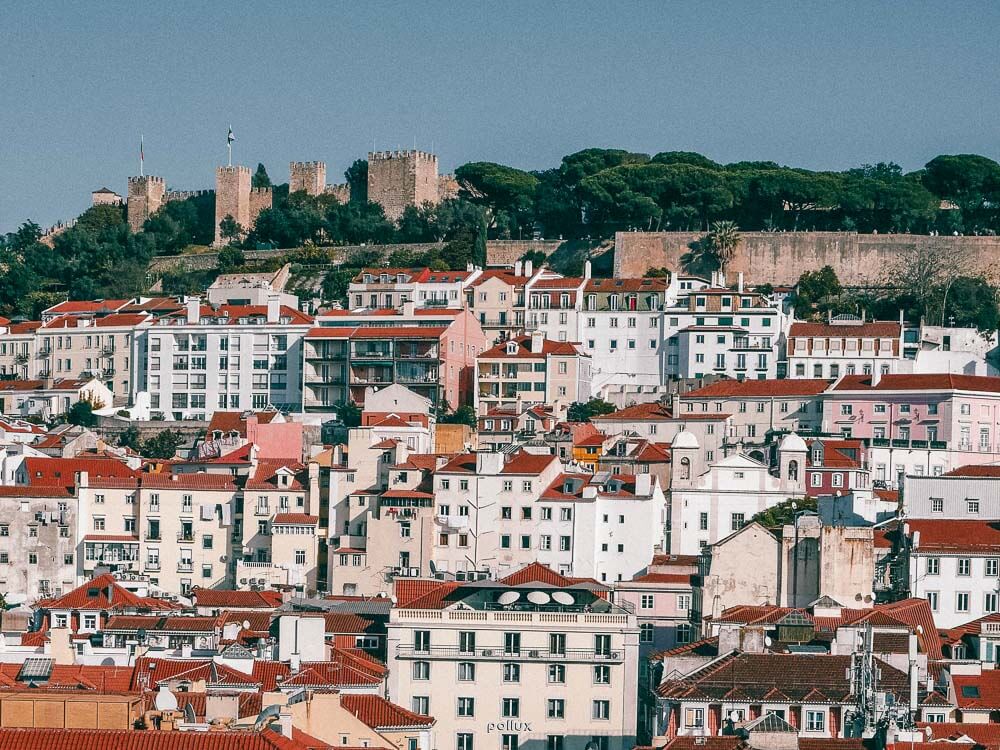
You’ll start your first day at the most ancient neighborhood in the city: Alfama. As the only neighborhood that survived the Great Lisbon earthquake of 1755, this is a great way to set the tone for your trip and have an immersive cultural experience.
To introduce you to Lisbon’s breathtaking landscape, you’ll kick things off at Miradouro da Senhora do Monte. From there, you’ll have your first panoramic vista of the city. And believe me, no one ever forgets their first miradouro experience!
Then, venture downhill and pay a visit to Igreja de São Vicente da Fora, where you’ll see the world’s largest collection of baroque tiles. You can get your tickets on their website. If you happen to be there on Tuesday or Saturday, take some time to go to Feira da Ladra, the city’s most iconic flea market.
Head to Igreja de Santa Engrácia, which was chosen to represent the National Pantheon, honoring distinguished Portuguese citizens, artists and military figures. Click here to get your tickets. Proceed towards Fado Museum, which pays homage to Portugal’s soul-stirring music genre that was born in the Alfama area. You can also get tickets on their website.
After this historical journey, you’ll probably be hungry. So, take some time to enjoy a leisurely lunch and aimlessly wander the streets of Alfama, soaking up its unique atmosphere.
When you’re ready to continue, make a quick stop at the Roman Amphitheatre ruins, a hidden gem that you don’t want to miss. These are some of the remains of Rome’s occupation in Lisbon, and you can visit them for free.
Then, go to Sé de Lisboa, or Lisbon Cathedral, the oldest and most important church in the city, dating back to the 12th century. The church is also free, but you do need a ticket to visit the cloister, which I highly recommend.
Next up, ascend towards two charming viewpoints, Miradouro de Santa Luzia and Miradouro das Portas do Sol, which are located side by side and offer mesmerizing vistas over terracotta rooftops and the Tagus River.
As the day comes to an end, get ready for the grand finale at Castelo de São Jorge. This medieval fortress is probably the most famous attraction in Lisbon, and it’s not hard to know why! Within its ancient walls is one of the best views of the city, which you’ll see first-hand as the sun sets. I recommend booking your ticket in advance here.
Before you head back to your hotel for some well-deserved rest, stop by at one of the many fado houses in Alfama to have an unforgettable dinner experience. After all, there’s no better way to immerse yourself in a different culture than through music and great food.
Day 2: Downtown
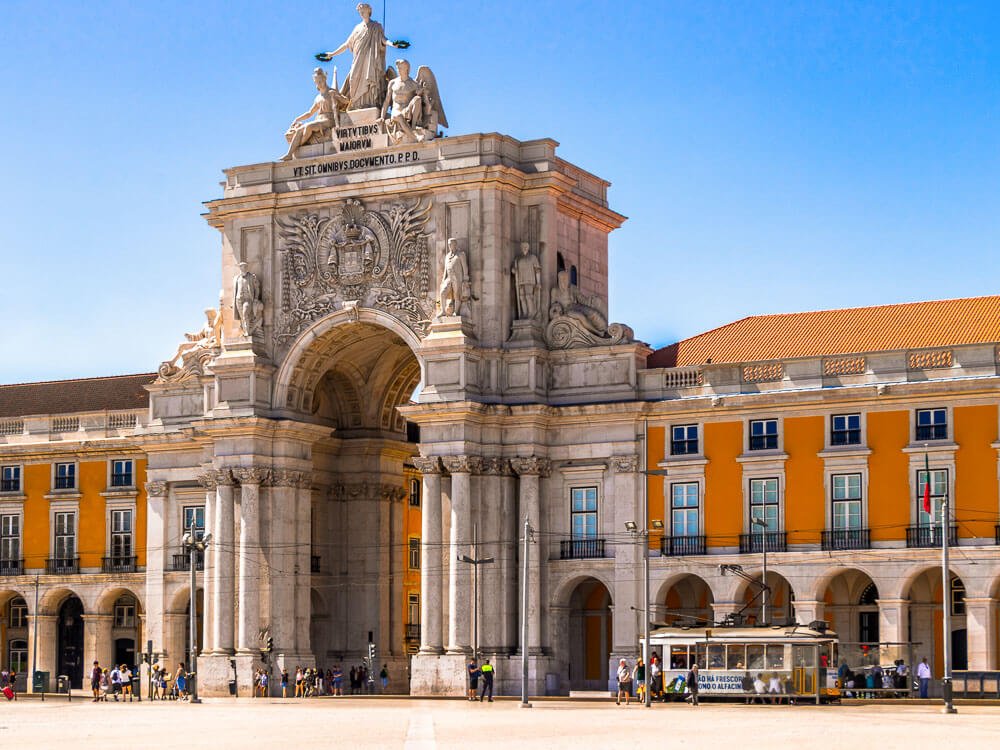
Day two of your 3 days in Lisbon will bring you to some other neighborhoods: Marquês de Pombal, Príncipe Real, Bairro Alto, Baixa and Chiado. This is where most of the attractions are, so prepare for a long day!
Start at Parque Eduardo VII, a green oasis in the middle of the city. Go to the top of the park for some more amazing city views. Other places to visit include: the green houses, garden Jardim Amália Rodrigues and Pavilhão Carlos Lopes, a restored historical building featuring azulejos.
After you’re done exploring, head towards the Marquês de Pombal monument, a key landmark honoring the man behind Portugal’s reconstruction post-earthquake.
From there, make your way through Jardim do Príncipe Real, an enchanting and peaceful garden where you can relax under the trees, before reaching Miradouro de São Pedro de Alcântara for another stunning vantage point.
Continue to Igreja de São Roque, the first Jesuit church built in Portugal, back in the 16th century. Its modest façade doesn’t bring much attention to itself, but as you enter, you’ll be greeted with an opulent interior that will leave you in awe. For more information about tickets, click here.
Then, go to Igreja de São Domingos, a fascinating church (with free entrance!) that had to be pretty much rebuilt from scratch after two tragedies struck it: the 1755 earthquake and the fire of 1959. You can still see scars from its past in the broken floors and darkened walls.
Nearby is Praça do Rossio, also known as Praça D. Pedro IV, one of Lisbon’s most bustling squares. From there, stroll down Rua Augusta, the main shopping and pedestrian street in Lisbon.
You’ll then reach the Elevador de Santa Justa, a 19th century iron-wrought elevator that takes passengers from the Baixa district to Largo do Carmo, providing a unique city perspective. You can buy a ticket there to ride it or just enjoy the view from the top platform.
From there, visit the ruins of Convento do Carmo, a gothic convent which was destroyed by the earthquake and is now an open air archeological museum. You can get tickets on their website. Then, go to Praça do Comércio, located in the heart of Baixa district.
That’s where you’ll find the impressive Arco da Rua Augusta and a Tagus River viewpoint. If you want to understand more about Lisbon’s past, I recommend going to the Lisboa Story Center, an excellent resource for the city’s timeline. Get your tickets here.
Finish your day by heading towards Cais do Sodré, where TimeOut Market awaits you with an array of culinary delights. It’s the perfect way to wrap up the second chapter of your three-day journey through Lisbon!
Day 3: Belém
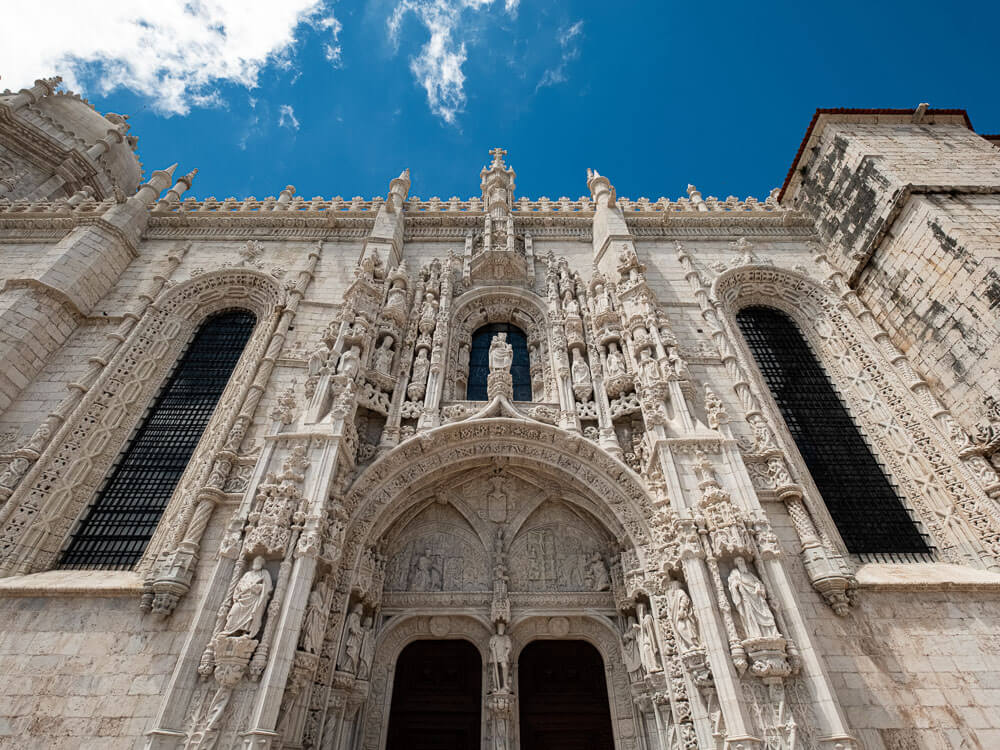
Of course, you can’t leave Lisbon without exploring one of the most important districts of the country’s history! So, on your final day, you will head west to Belém, the place from where the Portuguese set sail during the Age of Discoveries.
Start at the iconic Belém Tower, a beautiful and iconic defense tower built in the 16th century, which was also the place from where Portuguese explorers embarked and disembarked. Tickets can be found on their website.
From there, take a riverside stroll towards Padrão dos Descobrimentos, a monument built in 1940 to celebrate important figures of the Age of Discoveries. Then, head to Mosteiro dos Jerónimos, one of the most beautiful monasteries you will ever set your eyes on. Designed to commemorate the return of Vasco da Gama from India, construction started in 1501 and was only finished in the 17th century. Get your ticket here.
I highly recommend that you visit the two-story cloister of the monastery, as well as the adjacent Church of Santa Maria de Belém, where you’ll see the tombs of important figures, such as the above-mentioned Vasco da Gama and the poet Luís Vaz de Camões.
Now, you’ve probably been waiting for this moment since the beginning of your trip… It’s time to try the original recipe (and, in my opinion, the best) of pastéis de nata at Pastéis de Belém. For some historical context, this delicious custard pie was invented by the monks living next door and until this day the recipe is kept a secret! So, feel free to try one… or five (I won’t judge!).
Continue to the Museu Nacional dos Coches, which displays extravagant royal coaches and horse-drawn carriages. (This one may seem a bit niche and unusual, but most people will agree they were pleasantly surprised when they visited!). Buy tickets here.
If you have some extra time and want to further enrich your cultural experience, you can also go to Centro Cultural de Belém, where you’ll find the Museum of Contemporary Art, with works by renowned artists like Picasso and Warhol alongside temporary exhibitions. Buy tickets here. Another option is to visit Quake, an interactive earthquake museum that will tell you everything about the Great Lisbon Earthquake. Tickets here.
Otherwise, I recommend embarking on a Tagus River Cruise for some more enchanting views of Lisbon’s sunset. Then, to end your trip in great style, head towards LX Factory, a lively creative hub with more than 50 shops, galleries, and restaurants, and enjoy a memorable final night in Lisbon!
Have some extra time?
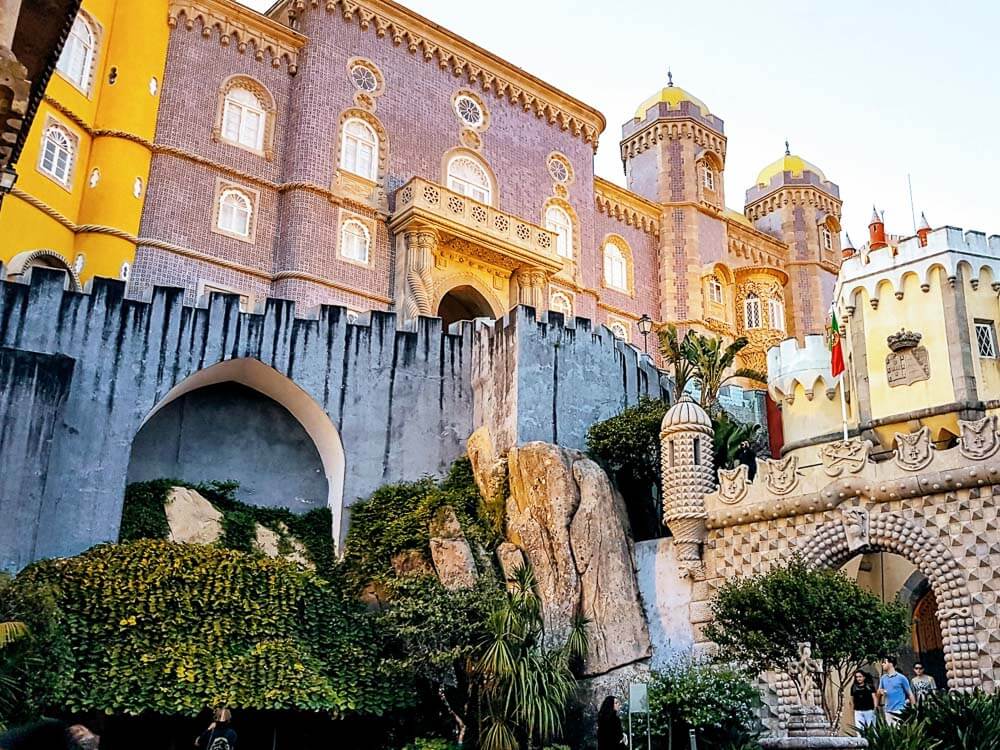
If you’ve made it through the itinerary and still have some extra time on your hands, there are many day trips you can take from Lisbon. And the best part? You can’t go wrong with either of them! Check out my main recommendations:
- Sintra is a very popular choice among tourists, and many say it’s the highlight of their trip. This town is home to Pena Palace, a colorful fairytale-like castle set atop mountains, offering panoramic views over the town and towards the Atlantic coastline. Other attractions include the Moorish Castle, Quinta da Regaleira and National Palace.
- Évora is a UNESCO World Heritage site renowned for its Roman Temple runs along with Gothic-style Cathedral and Chapel of Bones.
- Cascais was once a humble fishing village, but now it has transformed into an upscale resort destination. Its charming old town, beautiful beaches and marina are perfect for leisurely exploration.
- Óbidos is another worthwhile destination. This medieval town is enclosed within fortified walls and features charming cobblestone streets lined with traditional houses and shops.
These are just a few options, there are various other options if you still haven’t found your ideal day trip from Lisbon. But no matter which option you choose, I’m sure you won’t regret it!
3. Getting to Lisbon: Transportation Options and Tips

Now, it’s time to figure out how you’re going to get there. Whether you’re traveling from Europe or further away, there are many ways of getting to Lisbon depending on your preferences. These are your options:
Traveling to Lisbon by air
Air travel is a quick and efficient way to reach Lisbon, especially for international visitors. The city is served by Humberto Delgado Airport, also known as Lisbon International Airport. Being the biggest airport in the country, it’s well-connected to all major global cities, which will make your planning a lot easier.
Conveniently located just about 4 miles from the city center, you’ll have plenty of options to get to your hotel when you arrive. The metro is one of the most cost-effective ways, connecting the airport to key areas in Lisbon.
Another option is to take a bus, which provides a broader coverage across different neighborhoods. For a more comfortable experience, taxis or Uber rides can be booked easily from the terminals, just be prepared for possible traffic during peak hours!
You can also arrange a private/shared transfer prior to your trip, which is a great option for those traveling with lots of luggage. However, this option does come at a higher price compared to public transportation.
Traveling to Lisbon by train
For those traveling within Europe, a train journey is a great option to enjoy scenic routes and leisurely rhythm. If you choose this option, you’ll likely arrive at Santa Apolonia, Lisbon’s oldest railway station, nestled in the São Vicente district.
This central area is well-serviced by taxis and Uber, which is your best bet if you want to head straight to your hotel door. They’re particularly useful if you’re carrying heavy luggage or just plain tired from the trip and longing for a nap (we’ve all been there!). For a more budget friendly option, you can also take the metro or bus from the station.
However, if you’re feeling adventurous right upon arrival or staying nearby, you should consider walking! This neighborhood offers a lovely introduction to local life, and you’ll get a taste of Lisbon from the moment you step out of the train.
Traveling to Lisbon by bus
Besides the train, you can also choose the most economical option and go to Lisbon by bus. In this case, you’ll most likely arrive at the Estação do Oriente, a modern station located in the Parque das Nações area.
Once you’ve disembarked, taking a taxi is the best option to get to the city center if time efficiency and comfort are your priorities. It should take around 25 minutes depending on traffic conditions.
Alternatively, public transportation is an economical option for reaching downtown areas. Regular buses and metro services depart from the station and take about 30 minutes.
4. Getting around Lisbon

Regardless of how you arrive, rest assured that getting around Lisbon is fairly simple. And, since every second counts in a 3-day itinerary, you might want to take advantage of Lisbon’s efficient public transportation network, which includes buses, metro, trams and funiculars.
Those last two are great options to navigate the steep inclines while also getting panoramic views of the city, and the trams (including the iconic Tram 28) will take you right through historic neighborhoods like Alfama and Bairro Alto.
However, to be honest, one of my favorite ways of exploring any city is on foot, and Lisbon is no different. And, yes, the city is very hilly (be prepared for a bit of a workout!) but it’s also very walkable.
The attractions are close to each other, there are great sidewalks and drivers are respectful of pedestrians. So, if you’re not so worried about hitting as many landmarks as possible in record time, I definitely recommend walking and taking your time to enjoy the city’s vibes.
5. Is it worth going to Lisbon for a weekend?
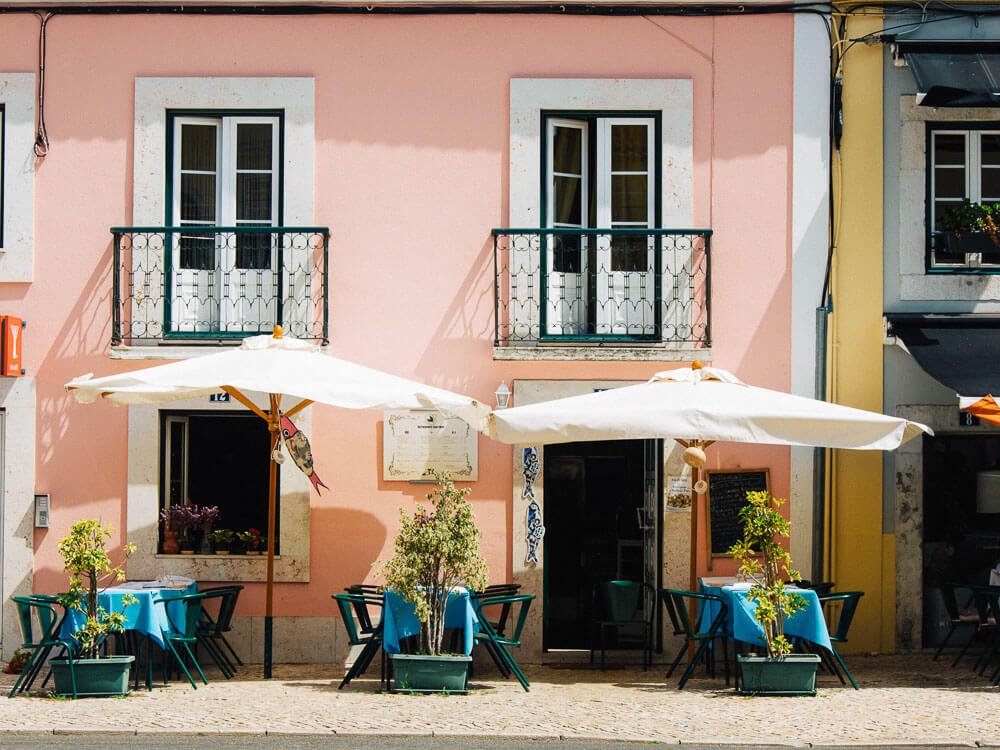
The short answer: yes, it’s totally worth it! Despite being the largest city in Portugal, Lisbon’s attractions are easily accessible and close to each other, which makes it ideal for shorter getaways.
The key is to carefully plan your itinerary so you can comfortably cover the majority of the city’s highlights without feeling rushed. My recommendation would be:
- Day 1: Baixa-Chiado and Alfama
- Day 2: Belém and Bairro Alto at night
So, even if you can’t stay 3 days in Lisbon, rest assured that you can still have a lovely experience in one of Europe’s most charming cities. Who knows, maybe one day you’ll even return to explore some more!
Ready for your Lisbon getaway?
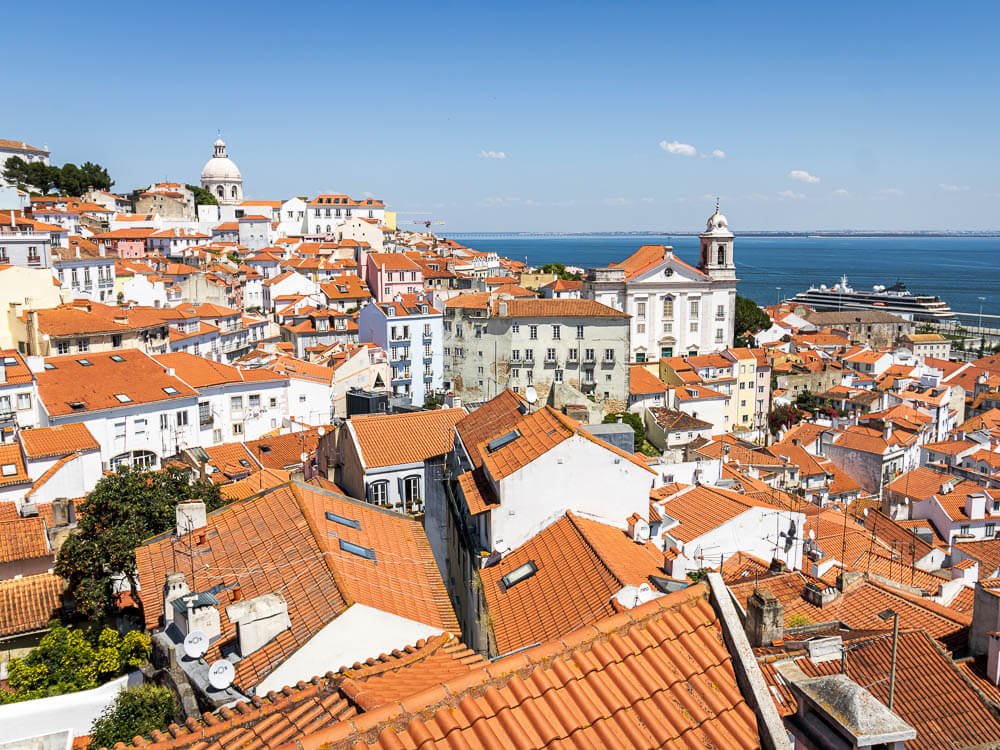
Now that you know what to do in your 3 days in Lisbon, you’re ready to embark on your adventure.
From exploring districts such as Alfama and Belém, to the echoing fado music in the narrow streets or indulging in culinary delights such as pastéis de nata, each experience in Lisbon is unique and worth every minute of your time.
So, pack your bags, tie up your walking shoes, and brace yourself for a memorable trip to Lisbon!






